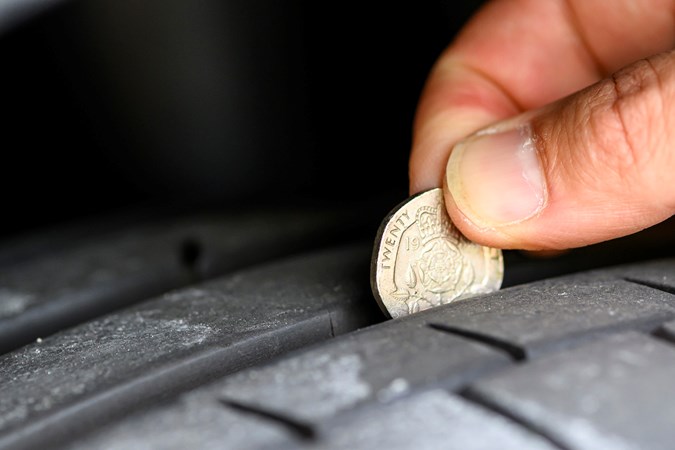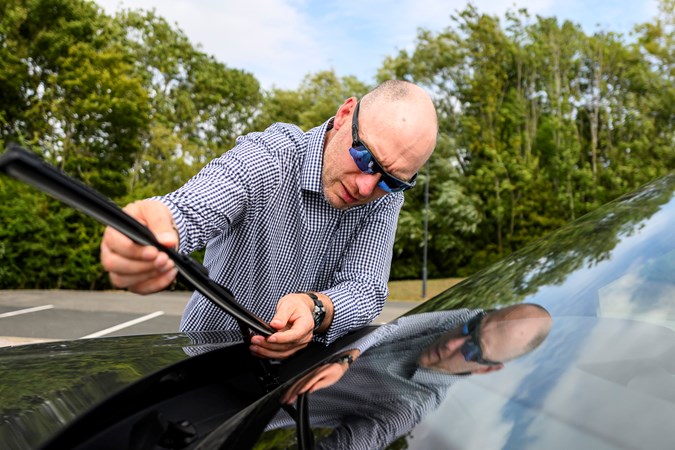Low tyre tread is the most common cause of MOT failure among the UK’s cars, while 61 had mismatching headlights and three pickup trucks had skew-whiff cabs. Those are just some of the failures found in data from the Driver and Vehicle Licensing Agency (DVLA) obtained by eBay.
The data was released by the DVLA after a Freedom of Information request and covers the period 1 June 2024 to 30 June 2025. It shows that by far the most common cause of MOT failure was tyre tread below the legal minimum depth of 1.6mm. Tread that low has potentially serious safety implications, as the car can’t grip the road properly, particular in wet or cold conditions – as we found out when we put theory to the test. Fortunately, it’s easy to check with a tyre tread depth gauge.
Other tyre-related MOT failures included 414 cars with tyres of different sizes on the same axle, which can compromise handling; and eight cars with tyres below the specified speed rating, which could cause them to overheat and fail. You can easily check all these things on your car – our comprehensive guide explains how.

Tyres weren’t the most failure-prone area of a car, though. That dubious honour goes to the suspension components – nearly 5 million failures playing just over 3 million for tyres. Broken springs accounted for 821,911 failures – the second most common individual cause. Hard impacts with things like potholes and kerbs can easily break a spring; they can rust through with age, too.
A broken spring is relatively minor compared to some of the more serious suspension faults eBay found in the data. 394 cars were missing suspension springs, 20 were absent a suspension arm, and 14 had mislaid a MacPherson strut. These are major components vital to a car handling properly.
Third on the ranking of most common MOT failures with 768,438 recorded were brake pads less than 1.5mm thick – the point at which they’re considered ineffective. Non-functioning side lights came in at number four on 767,167 failures, and damaged CV boots – which cover the joint between a car’s driveshaft and wheel – were fifth on 556,211 failures.

More unusual failures included 3,485 for missing wiper blades, 516 for damaged seatbelt webbing, three for disconnected steering components, and three pickups with cabs that were clearly not sat square on the chassis.
What this means for you
MOTs are vital in ensuring that the UK’s vehicle fleet is safe enough to be driven on the road. eBay’s analysis is quite concerning because it highlights that many car owners aren’t paying attention to faults that are easily spotted and rectified before their car is MOT’d – some of which could have disastrous consequences.
Some of the failures highlighted are quite subtle – mismatched headlights could be difficult to spot, and you’d only notice damaged CV boots if you were in the habit of inspecting the underside of your car. It’s possible some of the more alarming failures – such as the missing suspension components – came up on cars that were known to have a litany of faults and the owner wanted to know how bad the situation was.
But it’s plausible they simply didn’t notice their car was more difficult to drive than it should be. Which shows you should always pay close attention to how your car feels to drive so you can detect any changes that may indicate a problem

Senior Car Ownership Staff Writer’s view: regular car checks are vital
It’s really easy to get caught out when your car goes for its MOT. I’ve had a car fail because I’d forgotten to refill the screenwash, another because, for some inexplicable reason, it had a left-hand-drive headlight that pointed its beam in completely the wrong direction.
You don’t have to be a mechanic to spot MOT failure points. There are many you can find yourself while giving your car a quick pre-MOT checkover, and you may be able to fix some of them yourself – things like wiper blades and headlight bulbs are often easily DIY’d. Also note any change in how your car feels to drive – there may be something unseen that’s faulty.
It’s always best to have any obvious faults fixed before an MOT to save you the hassle and extra expense of a failure. And don’t forget you can ask a garage to carry out an MOT inspection on your car at any point if you think there’s a fault lurking in there somewhere, giving you time to get it sorted.
Graham King – Senior Car Ownership Staff Writer, Parkers
Just so you know, we may receive a commission or other compensation from the links on this website - read why you should trust us.










